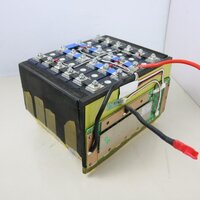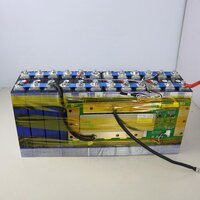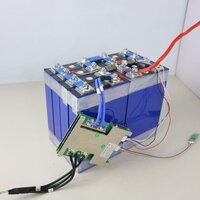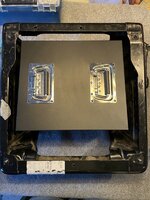Hi Guys! This is Steve at Roamer Batteries, happy to answer any questions

First off, I've had T4s and T5s for 10 years and currently have both a T5 4Motion and a Crafter 4Motion which I converted myself and now rent out for ski holidays in the Alps via Roamer Vans. You can see pics of our vans on our Insta page @roamervans So I know my way around off campervans and VWs in particular. The battery business was born from a love of off grid camping and frustration at the limited generic options available (and a lot of spare time over lockdown haha!).
Yes they are manufactured in China but on a quality controlled production line and we use high quality components - prismatic cells, busbars and 2 different customised BMS setups. We are a UK business, ship from our warehouse in Yorkshire and provide full UK warranty support.
We offer 3 capacity options (100Ah, 200Ah and 300Ah) and two BMS options. The first gives you Bluetooth monitor and the ability to tweak settings, but is only for single battery installs (no parallel or series connection) and limited to 150A continuous discharge. The second options is a more heavy duty BMS, we dropped the Bluetooth in favour of a higher continuous discharge rating and the ability to parallel or series connect. All batteries have standard protections - high/low voltage etc and we also added low temperature charge protection.
We can also make completely custom batteries - any case shape or size, voltage, capacity or power output. This has been really popular with overlanders in particular, as we can build a battery to fit a specific space. I've also been able to make some amazing batteries for people including a 24V 600Ah beast! The seatbase design started off as a custom battery but I decided to make this a main line product as it works so well. As far as I know, 200Ah of lithium is the biggest battery that can be fitted into a T6 seatbase?
This will be our second batch of seatbase batteries so I've been able to tweak the design slightly - the dimensions are now 330mm x 290mm x 180mm high so it'll now squeeze between the floor brackets, and beneath a swivel seat (the first design sat on the rails and it poked up slightly at one end). We had to reduce the size of the BMS from a 150A to a 120A continuous discharge but that seemed like a small compromise. I'm happy to do a teardown video when the next batch arrives (end of April) but in the meantime, you can see a typical layout and construction in BobbyBasics's post above.






